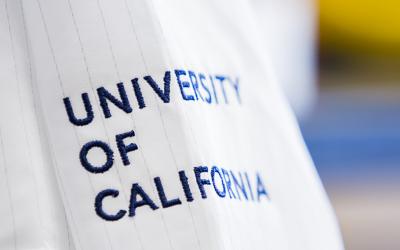
Faculty Spotlight: Shawn Hervey-Jumper, MD
Specialty: Adult Brain Tumors

Shawn Hervey-Jumper, MD, earned his medical degree from Ohio State University College of Medicine, and completed neurosurgical residency at the University of Michigan Medical Center in Ann Arbor, MI. He performed a fellowship in neurosurgical oncology at UCSF under Mitchel Berger, MD, during which time he focused on brain mapping techniques and surgery for tumors in eloquent cortex. He then returned to the University of Michigan where he continued to specialize in surgery for brain tumors and established a laboratory to study neurocognitive mapping and strategies to promote neural plasticity and recovery.
The Best Part of the Job
Our patients are amazing. In the face of these devastating diagnoses, they are so grateful and working with them is an incredibly rewarding experience. Whether it's trying to preserve functional outcomes or extend survival or help keep someone with a new brain tumor healthy before a wedding next fall, the opportunity to work with each individual patient is absolutely the best part of what I do.
Living with Purpose
The standard for brain tumor research has been to extend survival, but we don’t have many metrics on how to help patients improve their quality of life. It was during fellowship at UCSF that I really started to see what is important to our patients. Yes, they want to live, but they want to live for a purpose. We don’t know very much about the recovery process that happens in the brain, how to predict who will have a better recovery after treatment, or how the timing of therapy affects that. I began studying neural plasticity and realized there are big knowledge gaps as it relates to brain tumors, so that has become a big focus of my research program. Using a combination of imaging, molecular techniques, and genotyping, I study how an individual brain recovers based on genetic and imaging markers and hopefully we can use that understanding to determine who is at risk for poor recovery. If we can define those populations, we can come up with strategies to help recovery with therapeutic intent. The goal is to not only kill the tumor but to enrich the healthy brain.
A Map for Cognition
For the most part we are still mapping the brain in surgery the same way as we did in the early 1900s. This process works well for defining areas of motor function and language function. But we need better methods to map and understand an individual’s higher cognitive functions like the ability to multitask, working memory, or multisensory processing. In my research I collaborate with experimental neuropsychologists and we have adopted a number of intraoperative, non-language cognitive tasks related to functions like selective attention, distractability, and executive processing that we are beginning to test in the operating room. We increasingly know that if you have a brain tumor your probability of going back to work can be very low and not being able to work is also the primary reason quality of life declines. And even though many people with brain tumors have short survival times, there are many others who will survive 10 to 15 years with lasting deficits that may prevent them from living a fulfilling life. Genetics are starting to tell us who these people are and we can apply strategies to address these deficits. Sometimes it can be as simple as neurocognitive remediation to help with short-term memory, but having those tools can make a big difference.
The Best Part of Being at UCSF
The UCSF Brain Tumor Center really takes a team approach. When you have a team that works together toward a common goal you can do really good things, and I’m looking forward to working with such a dedicated group.
Read the full issue of UCSF Neurosurgery News, Volume 15 here.

